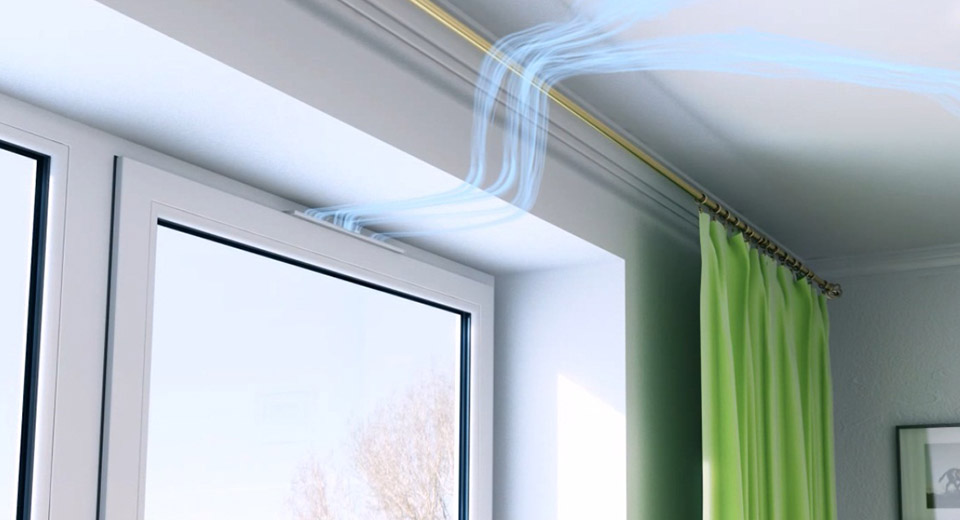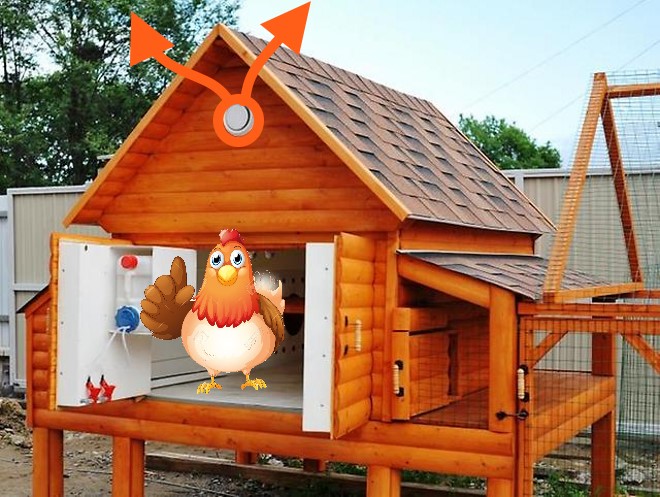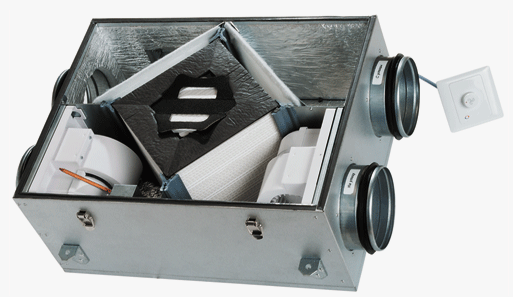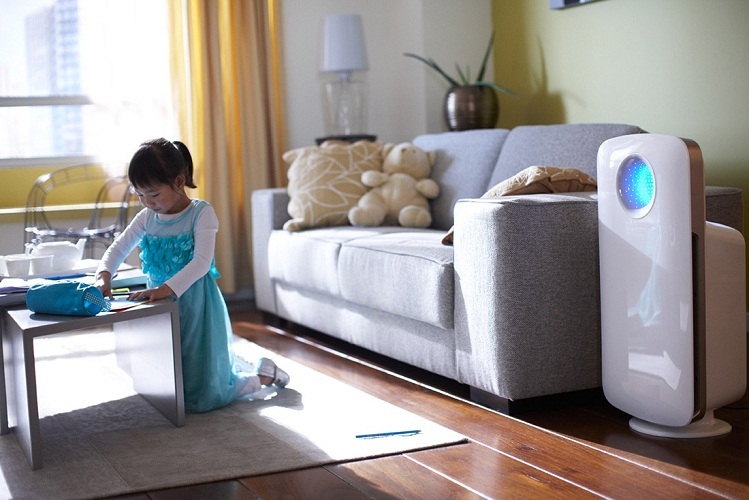The kitchen must be kept clean and at optimum humidity, and there must be no unwanted odors. An air hood successfully copes with the solution of such problems - a device that removes unwanted aromas, dampness, while being at the same time an attractive element of the interior.
The hood device and its principle of operation

The principle of operation of a kitchen hood is similar to that of a vacuum cleaner. The fan rotating inside the device draws in air, due to which a zone of reduced pressure is created in front of the case. Air currents rush to it, collecting on their way vapors, dust and masses spent in the process of breathing of people. Since the hoods are located directly above the stove, they receive combustion products, evaporation and fatty secretions. If the food burns, the appliances will absorb the smoke, preventing it from spreading through the apartment.
The hood is arranged simply, but functional:
- Housing. Serves to accommodate parts and mechanisms. Available in a variety of colors and sizes. Made of stainless steel, plastic or black enameled iron.
- Input filter. It is a dense grille located behind the front or bottom panel. Designed to trap grease and soot.
- Electrical engine. Serves for rotation of the propeller, it is made in a sealed casing that prevents moisture from entering. Some manufacturers use two low-power motors that make less noise.
- Fan. Today, drum-type products are more often installed, which are more efficient than axial ones.
- Lighting. It is made of 220 V lamps or 12 V LED boards powered by a stabilizer. Designed to illuminate the hob.
- Air duct. They are a pipe that removes pollution to the street or to the common shaft of an apartment building. There are no air ducts in recirculation-type devices, the air is passed through mechanical filters on the upper part of the case.
The trade network offers a wide range of household appliances. To make the right decision, you should study the features of the product, as well as the processes that occur when the cooker hood works.
Variety of exhaust devices
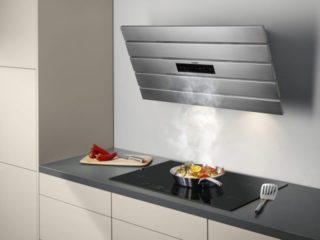
Manufacturers produce kitchen appliances in a variety of ways in terms of design, size, appearance and placement.
By the principle of operation, devices are divided into the following types:
- Flowing. The sucked-in dirt is fed into the general ventilation system or through a separate channel they are discharged outside through a hole in the wall.
- Recirculating. The air is driven through the filters and returned to the room.
By the type of installation, the products are divided into the following categories:
- Hinged. They are hung on the wall directly above the stove. They have a horizontal bottom panel.
- Embedded. Depending on the model, they are attached to a shelf above the stove or next to the hob.
- Suspended. Installed on the ceiling, air ducts can be masked with suspended or tension systems.
By design, hoods are divided into the following types:
- Smooth. They are a rectangular structure parallel to the floor.
- Inclined. The filter is tilted and can be opened by opening the decorative front cover.
- Dome.They are the most powerful, as large motors and fans can be installed in a large case.
- T-shaped. Belong to the category of hanging products. Installed above the work surface in the center of the kitchen (island type).
Manufacturers produce products, the body of which has a natural steel luster, painted in white, brown or black. There are models finished with patterns, ornaments and paintings.
Instructions for using the hood

You can use the hood in the kitchen without age restrictions or any other criteria. The device is completely safe and reliable in all respects. With sturdy mounting brackets, the product can support the weight of a child or large pet.
Rules for using devices:
- Do not screw the cable to the gas riser as induction can cause fire.
- Use the equipment only with filters connected or with vented air ducts.
- Enabling engine modes is phased, starting from "1". The introduction of maximum draft can cause a backflow effect into the room.
- Regular cleaning of the coarse filter or replacement of outlet filters in recirculation-type devices.
- Removal of ventilation ducts only in the shafts intended for this. When the draft changes, combustion products can get into adjacent rooms.
When washing the device, replacing filters or lamps, disconnect it from the mains. The possibility of electric shock cannot be ruled out.
Installation rules

When installing the hood, the following rules must be observed:
- reliability of fasteners - 2-3 times higher than the calculated parameters of the weight of the devices;
- distance from the sink - at least 50 cm;
- height above the stove - 70 cm from electric and 80 cm from gas;
- separate outlet to disconnect the device for maintenance;
- horizontality necessary for the correct operation of the motor;
- correspondence of the cross-section of the air duct to the exhaust pipe and its power.
It is necessary to build in equipment taking into account the strength of the cabinet, which is used as a supporting structure.
Advantages and disadvantages of kitchen hoods

Benefits of installing and using a cooker hood:
- elimination of unwanted odors;
- removal of moisture, grease and smoke;
- preventing fumes from fumes on furniture, walls and ceilings:
- reducing the risk of gas poisoning in the event of a malfunction of the autonomous heating boiler.
Disadvantages of the decision to use a cooker hood in the kitchen:
- purchase and installation costs of equipment;
- regular filter replacement;
- rather loud noise during operation;
- time and effort for cleaning, washing and replacing consumables.
The hood is an important part of the ventilation system of the home, without which it is impossible to achieve a normal level of sanitary standards.
Main selection criteria
When choosing a hood in the kitchen, you need to focus on certain criteria that affect the level of comfort in living in an apartment or house:
- power and performance;
- the degree of air purification;
- the principle of the product;
- the cost of the device and its maintenance;
- design;
- manufacturer;
- safety.
After evaluating and analyzing the information, you can make a decision and go shopping at certified retail outlets.



